The truth is — for most SaaS companies, managing SEO efforts is hard.
There are so many moving parts that get lost and forgotten about in a face-paced environment.
Many organizations make the mistake of thinking that SEO is a one-time task that you set and forget about – but rather it’s like the process of maintaining a garden.
You need to constantly keep a pulse on your efforts, as well as performance.
Over a decade’s worth of doing SEO for hundreds of SaaS brands – these are the most common SaaS SEO mistakes are what we’ve seen have cost our clients hundreds, if not thousands of potential net new customers, and a whole lot of additional MRR.
Let’s learn from others’ mistakes and mitigate the chances of these common mistakes from happening. 👇
Building content is GREAT.
Content is the lifeblood of SEO, and building quality content is at the forefront of being successful at SEO.
But building content simply for the sake of posting it on a blog, or a resource section of the website is generally meaningless.
We should always have three clear questions in mind before diving in and building any type of content:
Look – building content just to build content without any actual strategy hurts our SEO efforts.
Any content that is published on the website that does not have any direct purpose of generating traffic from Google or other search engines should not be indexed in said search engines.
We should have a clear strategy in mind when building search-focused content, and how it fits into the overall content marketing puzzle.
Conducting proper keyword research is the core starting point of understanding how we map back our content against search queries.
Building out and managing a content calendar is one way we handle this for clients, to ensure we’re building on the right topics, building proper internal linking between pages, and giving writers structured content briefs that they can build content around.
Remember, the user experience comes first and we want to be creating high-quality content that solves our user’s pain points, concerns and problems.
👉 Key takeaway: If you’re spending the time to build content, do it in a structured way. Plan and build a content calendar, conduct proper keyword research and manage the process from start to finish. There’s no reason here to just be throwing spaghetti at the wall and hoping and praying for results. Hope won’t get us there – building in a structured way will.
Driving trial and demo sign-ups are great, and that’s our primary goal of scaling out an SEO campaign.
As we know, not all potential customers are going to be ready to commit to a demo or trial of your product right on the spot.
If it was that easy, we’d be able to throw some marketing dollars at Google Ads, drive them to a lander and sit back and watch MRR grow like crazy.
For most SaaS businesses, that’s not going to be the case.
You need to have a micro offer (or offers) that allows you to collect and market back to these users using an email list, or another mechanism to constantly stay in front of them until they’re ready to grab a trial or demo of your product.
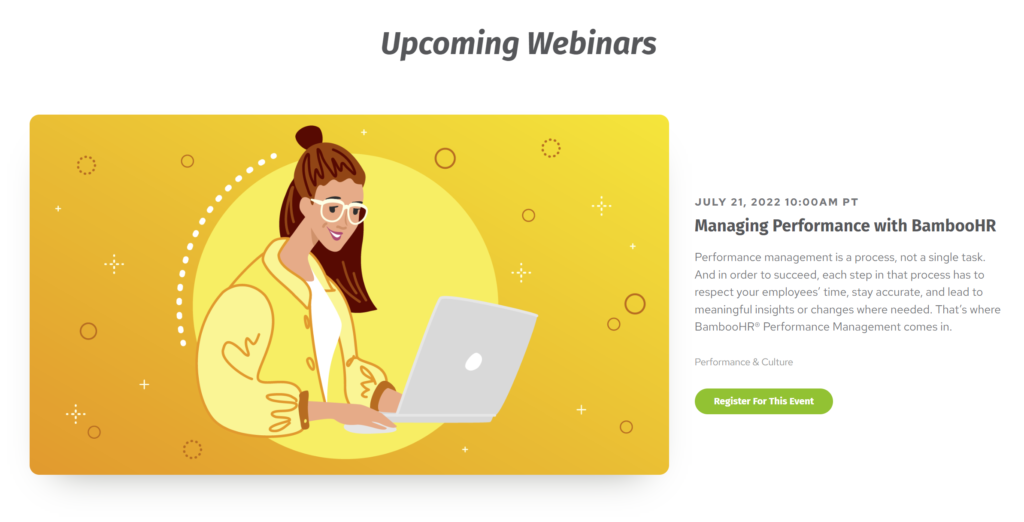
Provide value, collect their email from your potential customers and nurture them over time by providing value to them.
👉 Key takeaway: Having a single macro offer is not enough. You need to have one or multiple micro offers, and nurture your prospects.
If you’re not tracking conversion data and pushing that into Google Analytics, you’re going to have a real hard time understanding and managing expectations when it comes to marketing spending on SEO.
Early on in a campaign, it’s great to look at leading indicators within the first few weeks, such as keyword positions to understand that efforts are pushing you forward in the right direction.
But in the end, outside of tracking these vanity metrics over the medium and long-term, you should be tracking and measuring out MQLs, SQLs, and MRR data.
This includes conversion rates on your micro offers, as well as your macro offers (demos, trial signups,)
In order to measure these metrics, you need to have proper tracking and attribution set up in your analytics tool, such as Google Analytics (GA).
Look – no attribution is perfect, and it’s easy to get into that debate – but we need to be tracking high-level that we’re making performance and progress from our efforts.
The same goes for paid advertising campaigns when tracking Return on Ad Spend (ROAS), we should be also tracking the real revenue drivers when it comes to the SEO front – MQLs, SQL, and MRR.
👉 Key takeaway: Any visitor that comes to our website is way too important not to be tracking how they engage and interact with our content (as well as to be re-marketing to them across paid advertising).
During the process of keyword research, it’s important to truly map out and understand the keywords you want to be targeting, and the intent behind those keywords.
Don’t get caught up in all of the other metrics around search volume, and CTR to start – focus on nailing down and understanding intent.
It’s crucial to understand the user intent behind the keyword.
The best way to do this is to manually search the given query, and check the results pages in the top 10 of the SERPs by looking at the content itself of the ranking pages.
Breakdown the following questions:
It’s never 100% clear for a given query, until you actually determine the intent behind the term, how you should best structure your page to have the best chance of ranking, and matching both the user’s intent, and Google’s intent.
👉 Key takeaway: Conduct keyword research before diving in head first to building out website content to mitigate the chances of content underperforming.
There are two types of page titles that are really important for Google:
The Meta Title is one of the first things a user sees when they scan Google’s search results:

The font size is generally the largest on the page, the text is blue (because it’s a hyperlink) and this is one of the basic criteria that users are scanning before making the decision to click particular results, or not.
Defining clear, concise meta titles is the core starting point for both ranking a page in Google, as well as driving actual clicks to that page as it’s found in the search results.
The content on the page should also deliver what you’ve promised in the meta title.
Here’s an example of an unclear meta title:
Marketplace | Company Name.
Just think about it. Nobody is typing the word “marketplace” but at the same time thinking about SaaS that can help them build an online marketplace.
You can try it yourself and see what kind of results you get after typing this single word in Google.
Usually, you’ll get a Facebook Marketplace or some Wikipedia article. So instead, you should use something like this:
Marketplace Builder – Create Your Marketplace | CompanyName
As you can see there’s a huge difference because you’re using an important keyword “marketplace builder” and also explaining to the people what’s behind this title in Google search.
Be clear, think about the user intent, and add keywords into your meta title.
The Meta Title itself shouldn’t be longer than 60 characters because if it is, it will be truncated in Google search and people will see three dots instead of your company name/keywords you’ve used:

So think twice before you publish.
The second kind of title (h1 heading) is the first thing people see after they land on your page.
That’s why it has to be as relevant as your meta title and also serve as a certain type of a hook that will make people read the rest of the content on the page.
The H1 should also consist of the primary keyword, just like the meta title.
Besides H1, there are subheadings you can (and should) use to structure your content and increase the chances of additional SERP features:

Getting started, focus on the core on-page items, which include the Meta Title as well as the H1 of the page.
As best practice, it’s best to plan these out while building content outlines for the writers so they have exact guidance on how to best build the page’s content in a way that is best for the user, and also be search-engine friendly.
👉 Key takeaway: Meta Titles and Page Headings (especially H1s) are a very strong indicator to Google’s algorithm as to what this page is about (reflecting on how it will rank in Google’s search results) and is also an important indicator to the user which will compel them (or not) to click your result, vs. another result.
Struggling to grow organic demos signups? Rock The Rankings is a top-ranked SaaS SEO Agency that helps SaaS businesses make organic their customer acquisition engine. We’ll create a free marketing plan for your business, and walk you through step-by-step exactly what needs to be done to grow faster.
Meta Descriptions are the second most important item which appears in the SERPs (search engine results pages).
Meta Descriptions are displayed underneath the Meta Title, and serve the purpose to explain what the page’s content is all about:

The Meta Description should be descriptive and act as a way to drive clicks on your results.
You want to:
Meta Descriptions are often neglected, and nothing is actually added – meaning Google gets to decide and choose the meta description for you based on the content of that page.
For instance, take a look at these two examples:
SaaS cloud solution that helps you generate and operate a marketplace, using cloud tools.
BORING!
I’m already asleep.
Next one:
Not just any cloud SaaS company. We’re a dedicated partner that helps you with creating your own cloud marketplace. 24/7 support! Contact us today!
Not bad, not great.
Getting warmer.
Ok, one more.
THE cloud marketplace for creating, operating and generating revenue. Free demo, no commitments. Get started now and starting scaling faster.
Now we’re talking.
Creating meta descriptions that actually drive clicks and are appealing to our users is the name of the game.
This is always a huge win we take on for SaaS companies we engage with, but running our Growth Audit and pulling back pages that are ripe for optimization to drive more clicks, and conversions.
For meta descriptions, we want to be:
Not sure where to start?
Run a quick crawl with SiteBulb or Screaming Frog (if you need help deciding, we have a breakdown of the SaaS SEO tools and crawlers we use for each situation) and you can easily pull a list of all pages of a website, and pull back the meta descriptions, as well as other core items including meta title, H1s, etc.
More quick wins you said?
Navigate over to Google Search Console.
Pull back pages or queries that have:
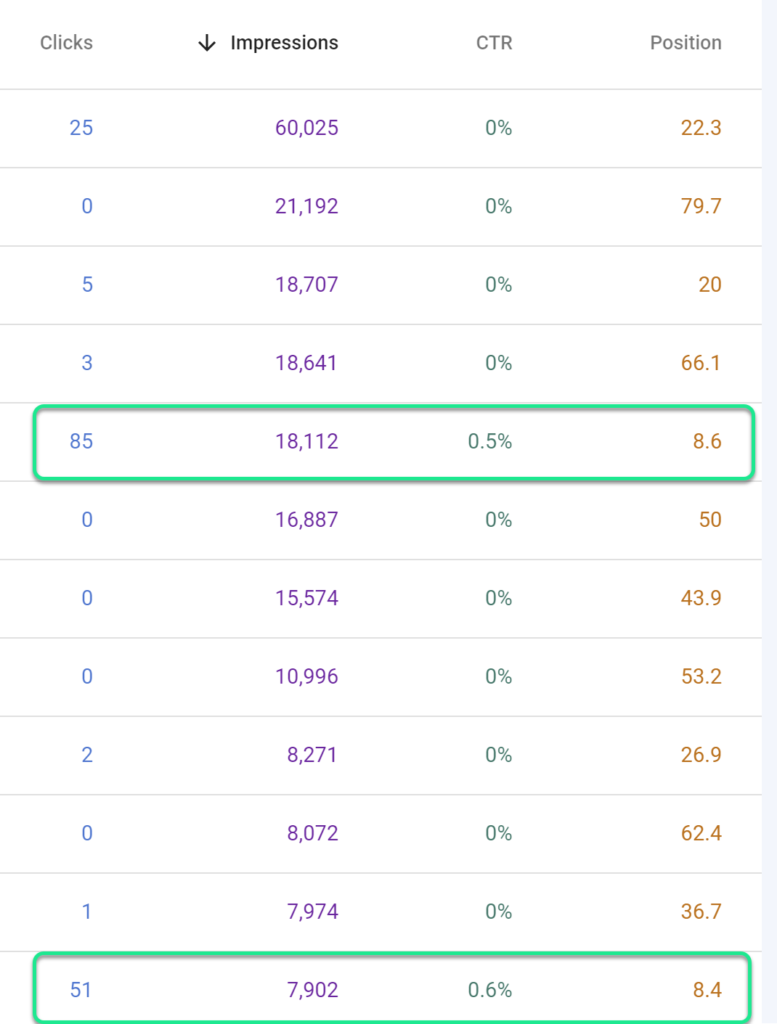
Get to work optimizing to improve CTR.
👉 Do these common SEO mistakes sound familiar? Not seeing the results you want from your SEO efforts? If you’d like to learn how we can help you grow faster and overcome those hurdles, book a Free Grow Faster Session with our veteran SaaS SEO team. We’ll walk you through a customized SaaS marketing plan for your business, and show you how you can start scaling MRR faster.
👉 Key takeaway: Meta descriptions serve to attract more clicks from Google searches. Use them wisely, and optimize them for more clicks, and more demo/trial sign-ups. It’s that easy.
We’ve seen this a lot of times.
A custom-built, one-pager website that could (and should) of been built using a CMS like WebFlow or WordPress.
The Marketing Manager’s heartbreak.
No custom fields, no ability to change the meta title or meta descriptions?
Static content? Zero customizability?
We feel you – we hear it all the time.
The one-pager website.
Unlike a multi-page website (the menu navigation items link to other single pages), menu items on a single-page website link to different sections of the page by using jump-to links.
This looks sleek, but at the same time makes ranking for important queries extremely hard, or even impossible.
Why?
Simply because there are no separate pages that you can use to target different user intents.
So if you have only one page, then it’s going to be hard for Google to rank your SaaS site for the commercial (or any other) search queries that are important for your business.
Just think in terms of pages = the opportunity to target users more precisely.
Your landing pages should be a “bridge” between your business and your customers. Landing pages should serve to better explain your offer.
It’s very hard to explain your (usually complex) SaaS product on one page, in a couple of sentences.
This is not only confusing for users but for Google as well.
Google can’t rank you for the desired terms if you’re not providing enough context for it.
That’s why you need a landing page for each and every aspect of your SaaS product and/or service.
These pages should be interlinked properly within the URL architecture.
👉 Key takeaway: You’re going to need access to multiple pages (and templates) to get the job done. A single-pager won’t cut it. If SEO is a priority, and you want it to be your primary driver of MRR growth, the one-pager has got to go. Get buy-in, move over to WordPress or WebFlow, and build out a custom theme there to run with.
For most SaaS companies, less is more.
We don’t want to clog up the index with low-quality pages, or pages without any ranking intent.
These pages have to be pulled out of Google’s index – but – they can still live on the website and be accessible by users.
For most SaaS organizations, you’re probably going to have a few hundred pages max indexed in Google that are high-quality, search intent-based pages.
For most that are in the earlier phases, that number is even less – as low as a few dozen.
This is a very rough generalization, but we see all the time thousands of pages indexed, with maybe a dozen “quality” pages that actually can/are ranking, and have search value.
Head over to Google Search Console, and visit the “Coverage” tab on the left-hand navigation:
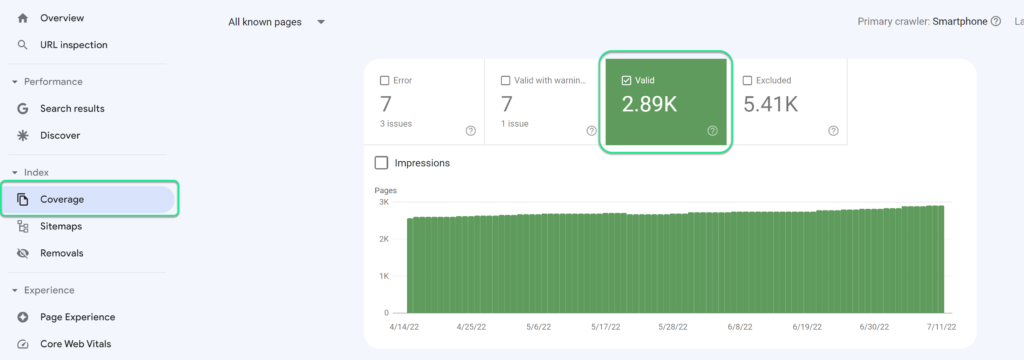
Here you’ll see a count of “Valid” pages, and as you scroll to the bottom you’ll see and can click into the detailed view of these specific pages:

Run a site crawl, and remove all pages which have no search value or are low-quality pages.
You can remove these pages by:
This is one of the first action items in our SaaS Grow Faster Playbook we run when working with a new client.
Out with the old, in with the new.
We don’t want low-quality pages, or pages without any “ranking intent” to be indexed in Google, or other search engines. Period.
👉 Key takeaway: You’re going to need access to multiple pages (and templates) to get the job done. A single-pager won’t cut it. If SEO is a priority, and you want it to be your primary driver of MRR growth, the one-pager has got to go. Get buy-in, move over to WordPress or WebFlow, and build out a custom theme there to run with.
Don’t base your site only on JavaScript.
When the loading of your pages is highly dependent on the client’s side, then there’s a high possibility that Google will have a hard time rendering (and understanding) your page’s content.
Hence, it won’t rank them in the highest positions.
Why?
Google has to process JS web pages in three phases:
And to be able to do this, it requires additional resources i.e. computing power.
This costs Google real dollars.
That’s why Google ranks these pages with a delay, sometimes up to several weeks (render queue).
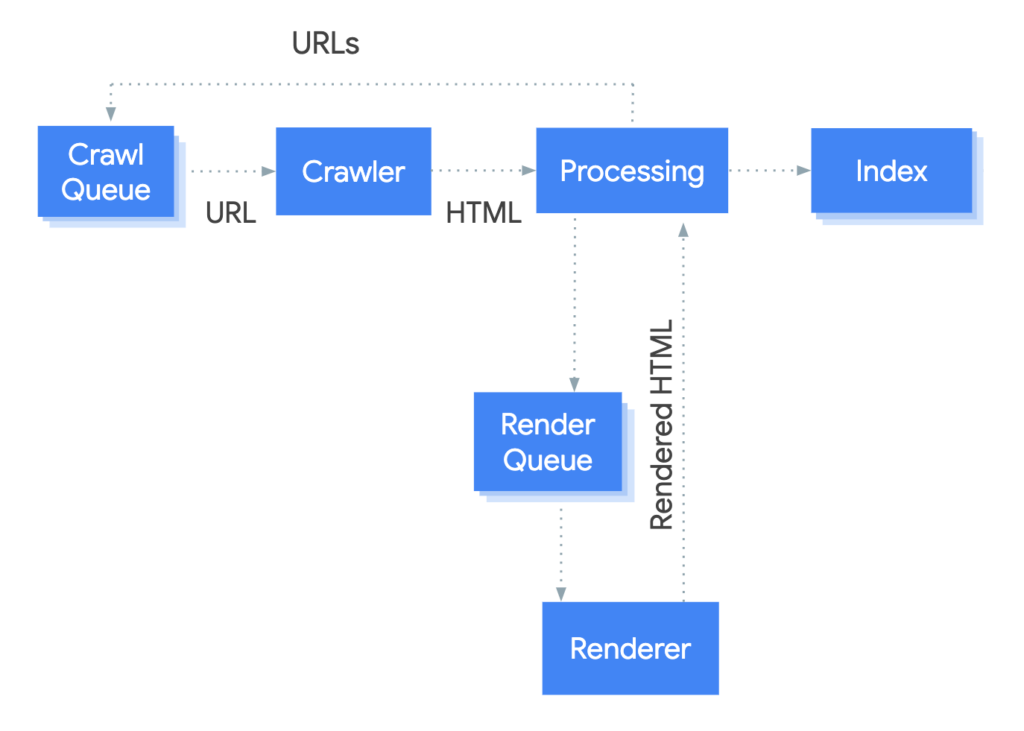
This works well for server-side rendered pages where the HTML in the HTTP response contains all content. But if pages have to be client-side rendered – then you’re making your life (and Googles, and the users) harder.
For example, we don’t want this happening:
If a page requires JS to be rendered (previewed) then you should think twice before you start thinking about search engine optimization.
It’s much better to use HTML/CSS wherever you can and use JS only when necessary (for dynamic stuff).
This will help you big time!
Read more about JavaScript SEO here.
👉 Key takeaway: JavaScript is the most popular programming language, used on a lot of famous websites. But you should be doing not what’s popular, but what can help you increase the online presence/visibility of your SaaS business.
This is one of the most common mistakes that many SaaS websites are making.
Neglecting how your website structure is organized can cause some serious issues later on (once you publish more pages).
It only becomes more complicated over time to resolve and fix architectural issues as you’ve picked up backlinks, and are stacking pages and content side-wide.
A clean URL structure is going to set you up for success.
Sub-domain usage vs. sub-folder is a big issue we see across many web properties, and we want to mitigate the issues that come with this as quickly as possible.
It’s better to address URL structure and handling early on when you have the ability to easily create and structure sub-folders, as well as to target primary keywords accordingly within the URL of the page itself.
👉 Key takeaway: Think about and decide on URL structure from the start. Plan ahead, and if it’s still not “too late”, go back and re-adjust accordingly before diving head first into a massive SEO campaign.
Backlinks are one of the most important SEO ranking factors.
If you want to rank, be visible, and drive measurable results (revenue) from Google and other search engines, you’re going to need a solid backlink profile to do so.
Oftentimes, this requires some education internally as to why this is important, and the best approach needed to get to the desired goal.

A strong backlink profile equates to strong rankings, assuming a proper content marketing strategy is in place.
This has a direct impact on demo/trial signups and MRR.
Undoubtedly, if it’s going to take $5k per month over 12 months to catch up to the competition in the SERPs, some eyebrows are going to be raised if the concept of links and their importance in the overall picture is not fully understood.
It’s important to clearly track and measure link output and ROI from these efforts, just as with all other SEO efforts.
Luckily with Linkbuilding for SaaS, there are many ways to skin the cat.
👉 Key takeaway: You should be managing and building your link profile on an ongoing basis in order to build a moat to keep the competition out, and dominate the search results. Links are one of, if not the most important SEO ranking factors for search engines, including Google.
Technical SEO for SaaS companies is important.
But there are a lot of technical items that are low or no-impact where millions of dollars get wasted each year.
Chasing down and perfecting every little “opportunity” from a SEMRush crawl is not going to suddenly bring in an additional $100K MRR.
There are really a few core Technical SEO opportunities for SaaS organizations that we’ve detailed before, and those include:
Outside of these core items, everything else is mostly fluff, and won’t move the needle.
It will cost marketing dollars to fix, with little to no impact.
👉 Key takeaway: The vast majority of SaaS organizations don’t need to deep-dive into Technical SEO. It’s important, but it’s not going to be a game changer when it comes to scaling demo/trial sign-ups and MRR. Focus on the core movers based on impact, and leave the rest in the wind.
Competitor comparison pages are an excellent way to catch users who are closer to the bottom of the funnel when comparing up your product against a competitor.
If you’re not building competitor pages, you’re most likely letting your competition control the conversation and narrative that’s going on when a buying decision is being made.
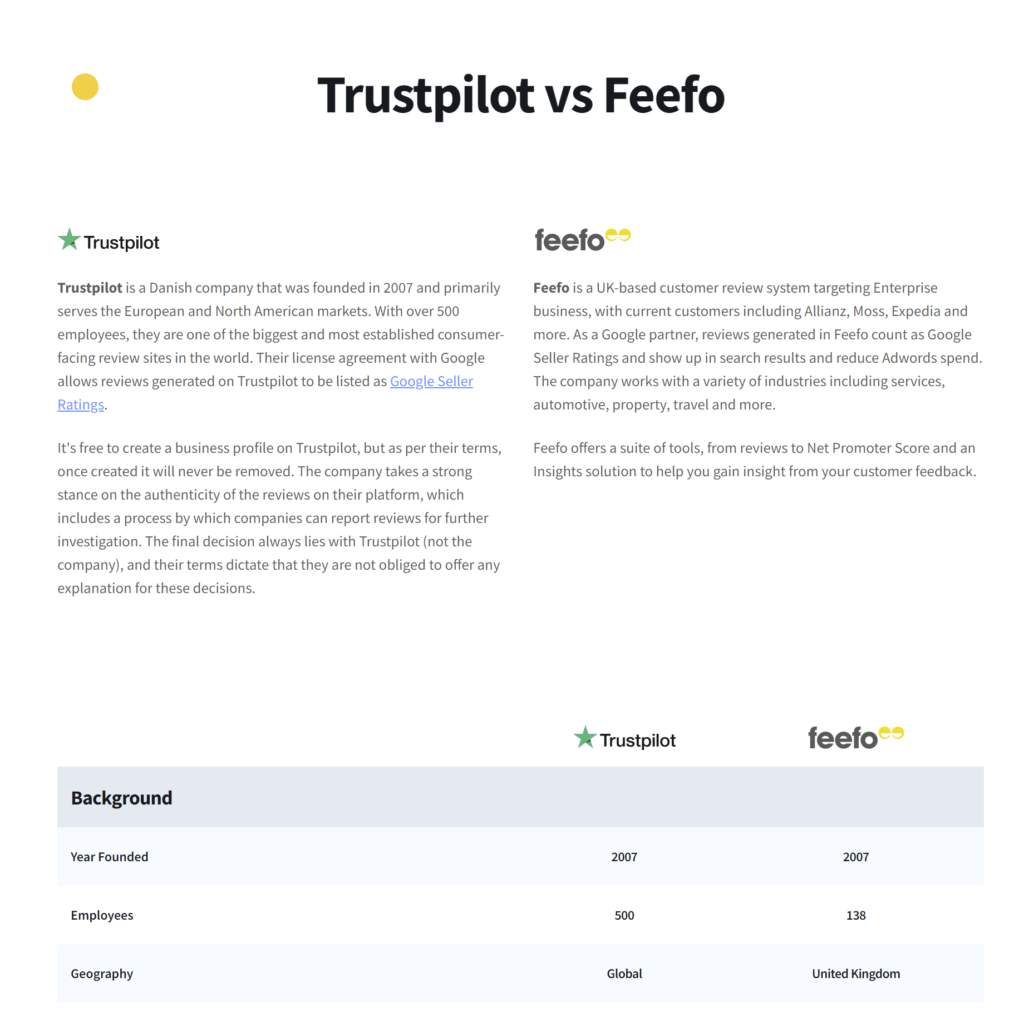
Competitor comparison landing pages are not only a core asset for businesses that have already established brand awareness in the market, but they can also be leveraged by younger startups and organizations that lack brand awareness to get their foot in the door when these decisions are being made.
👉 Key takeaway: Control the narrative both around your business, and the competitors. SaaS competitor landing pages are a core way you can have your say and pit yourself up against the competition before they do it for you.
If you can avoid the above mistakes, you’re likely in the top percentile of SaaS organizations that are doing SEO “right” and seeing the fruits of your labor.
Moving in the right direction, and getting better by 1% per day is all it takes to dominate the SERPs.
👉 Do these common SEO mistakes sound familiar? Not seeing the results you want from your SEO efforts? If you’d like to learn how we can help you grow faster and overcome those hurdles, book a Free Grow Faster Session with our veteran SaaS SEO team. We’ll walk you through a customized SaaS marketing plan for your business, and show you how you can start scaling MRR faster.
We love helping SaaS organizations to smash their growth goals, and scale MRR. Here are two more ways we can help you grow faster:
Founder of Rock The Rankings, an SEO partner that helps B2B SaaS brands crush their organic growth goals. An avid fan of tennis, and growing micro-SaaS businesses on the weekend. 2x SaaS Co-Founder – Currently working to build and scale Simple Testimonial.
Book a 1-on-1 intro call with our founder that includes a FREE custom marketing plan. Start growing faster, today.